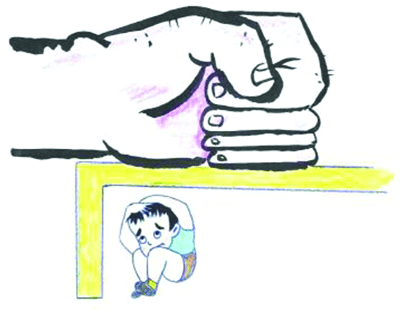NYU’s animated John Canemaker gets personal
Sorry, Mickey fans, for better or worse, we are living in a new age of animation. Gone are the days of Disney serials, trippy ‘70s “Schoolhouse Rock,” and even the iconic toon of the ‘90s, “Beavis and Butthead”—which if you mention to the youth of today produces blank stares. Even loopy adult animation like the programming featured on Cartoon Network and the once incendiary “South Park” are nearly completely integrated and accepted as part of today’s society, forsaken as topics of ire by the Christian right.
In fact, the majority of new animation we see is either the pop/punk creations of Japan, which bears nearly no relation to its circle-eared American cousin, or the shiny billion-dollar veneer of a Disney/Pixar flick. In a world awash in Hentai, Ecchi, Yaoi, and Yuri anime—and “Adult Swim”—what’s left to animate?
The answer, it would seem, is one’s self. This year’s Academy Award winner for best animated short, John Canemaker’s “The Moon And The Son” is an exploration of the life of the man who drew it and his relationship to his father. It is an exceedingly personal subject matter for animation—Canemaker is openly gay—but also it is a film without closure, something that, for the most part, mainstream animation has not achieved thus far. Also the film’s genre is itself something of an act of creation. The majority of it is animated, but it is effectively a documentary of the filmmaker’s life, containing real photos, home movies, and newspaper articles to boot.
“Actually, it was difficult to place it,” the filmmaker expressed in an interview with Gay City News. “It was a documentary, but when we tried to submit it to documentary film festivals it was rejected.”
However, the film festivals were not the only ones unable to place the film. It’s concept of hand-drawn animation as self-exploration is nowhere to be seen outside of niche animation festivals. Certainly, “The Moon And The Son” is an adult piece, especially in the way it deals with Canemaker’s own abuse as a child, but it bears more in common with Jonathan Caoette’s “Tarnation” than with “South Park” or “Aqua Teen Hunger Force.”
Canemaker has explored the world of serious animation before. He is the director of the animation program at New York University, but in his professional career he has done work for Gay Men’s Health Crisis, anti-nuclear activism, and the feature film “The World According to Garp.”
“I actually never went to college until I was 28, though.” Canemaker recounted. “When I was 18, I came to New York City for two weeks and never left.”
Canemaker spent his young adult years working as an actor in New York City before, unfulfilled with the TV commercials he was making, he sought a creative outlet in animation.
“I had done animation as a child, but I hadn’t gone back to it in a long time. But when I went to college, it opened up a world for me, a world of philosophy, a world of history, a world I’d never heard of before. When a teacher there heard that I had done animation, he told me, ‘Why don’t you go down to Disney and study and I’ll give you six credits if you write a paper.’”
That was incentive enough.
Since then, Canemaker has published several books on animation as well as securing a tenured position at his alma mater NYU. His film “The Moon And The Son” is an inarguable accomplishment that casts him among the greats he writes about. In fact, several major feature documentaries in the development phase feature the same technique he practically invented of the “true-animated film.”
But even faced with the challenges presented by the stagnation in animation today he is optimistic.
“Even though Pixar is popular and Disney has officially sworn it off, I think hand-drawn animation of the old type is still very much alive. I think too many people love it too much, and they always will.”
gaycitynews.com



































